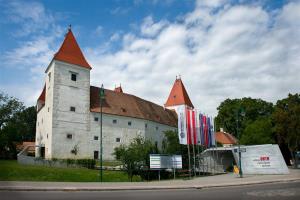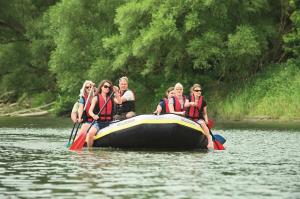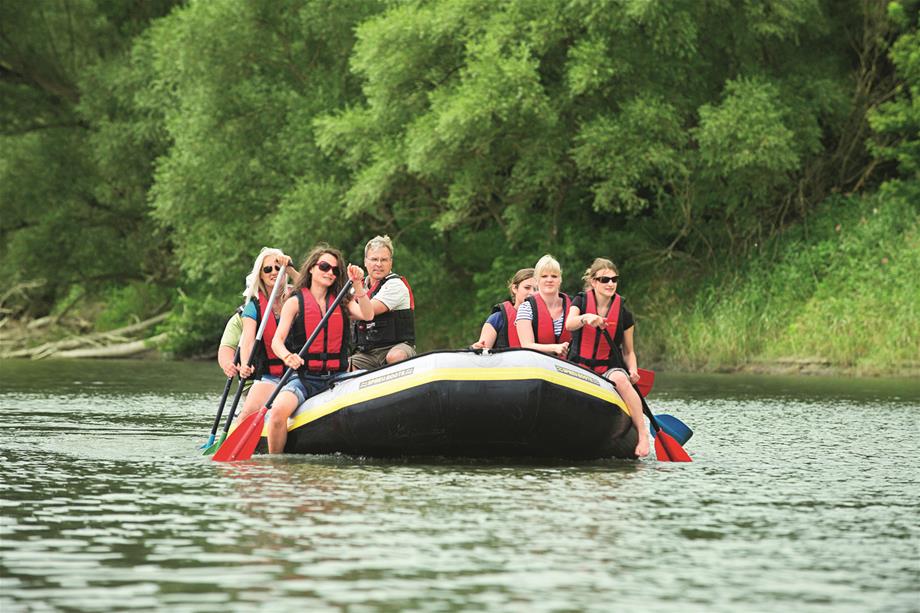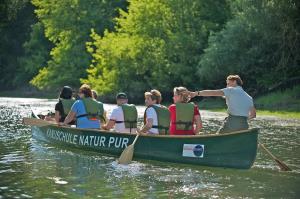Donau-Auen
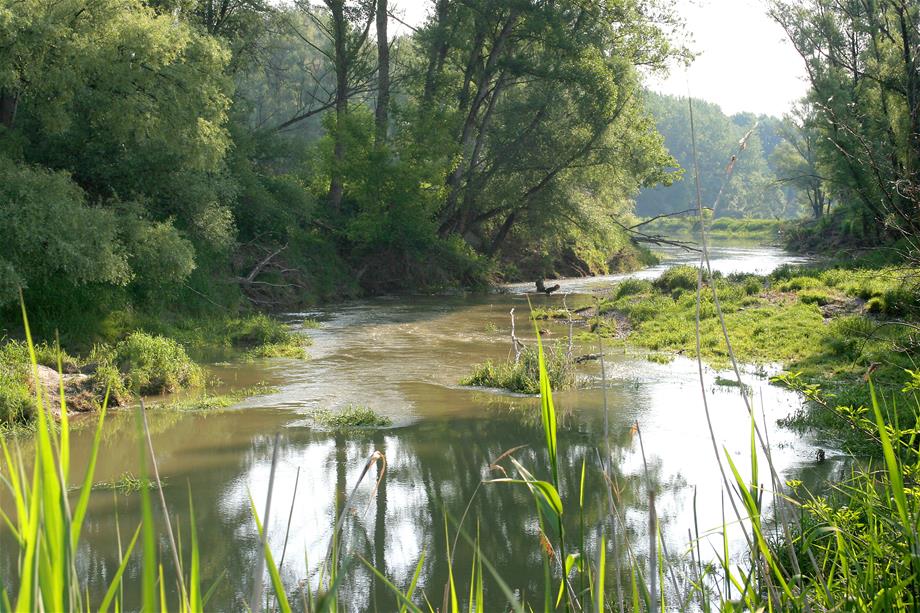


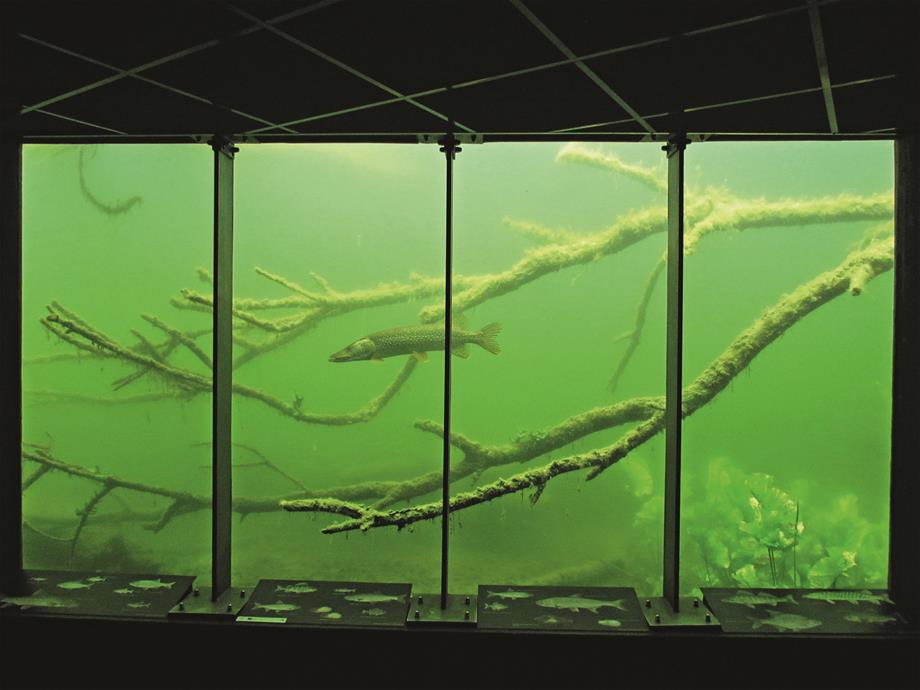
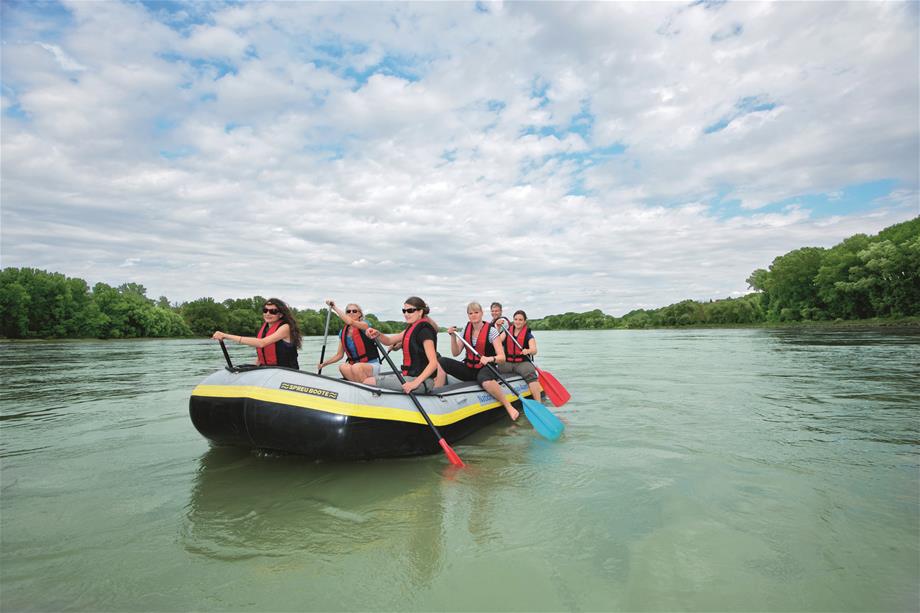

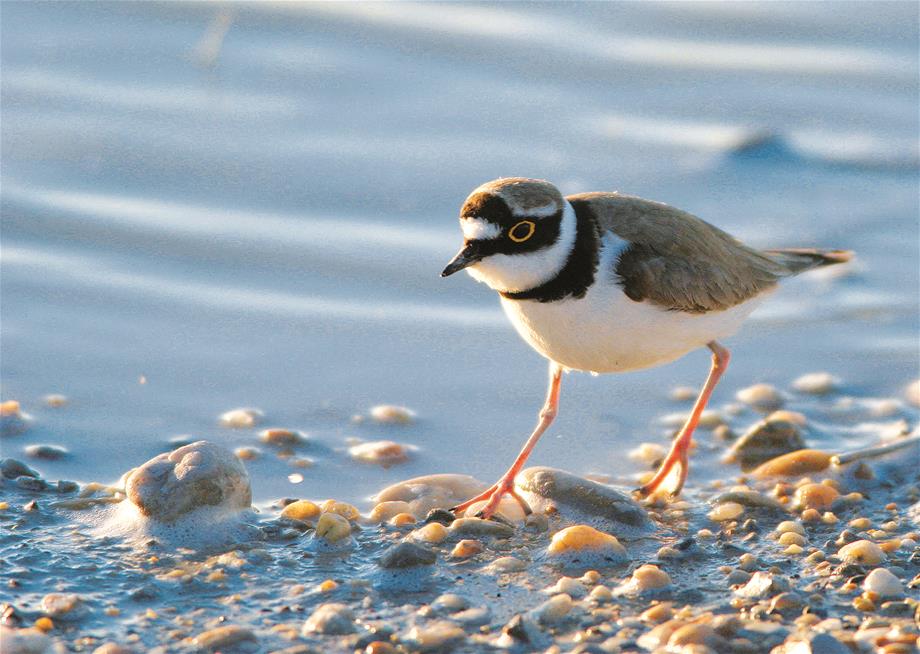


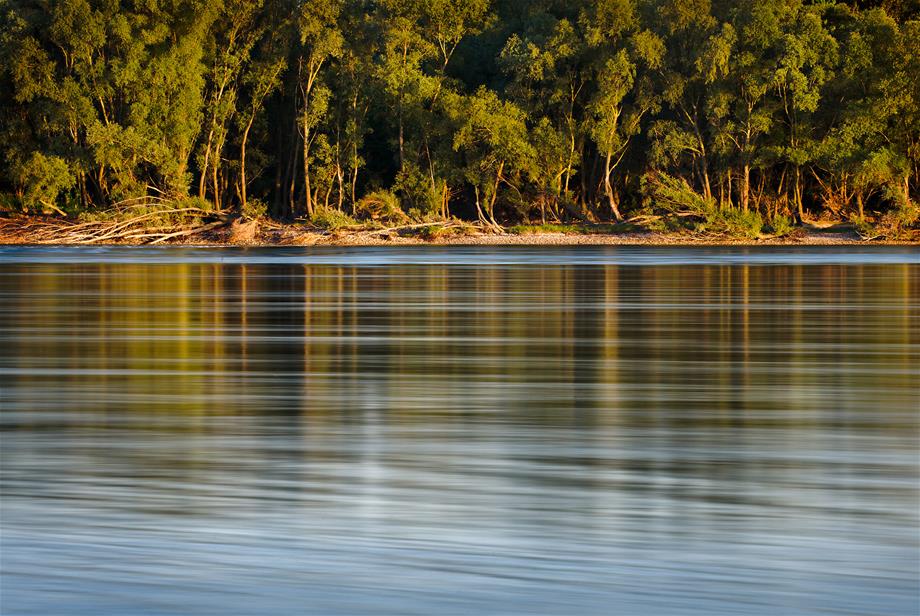
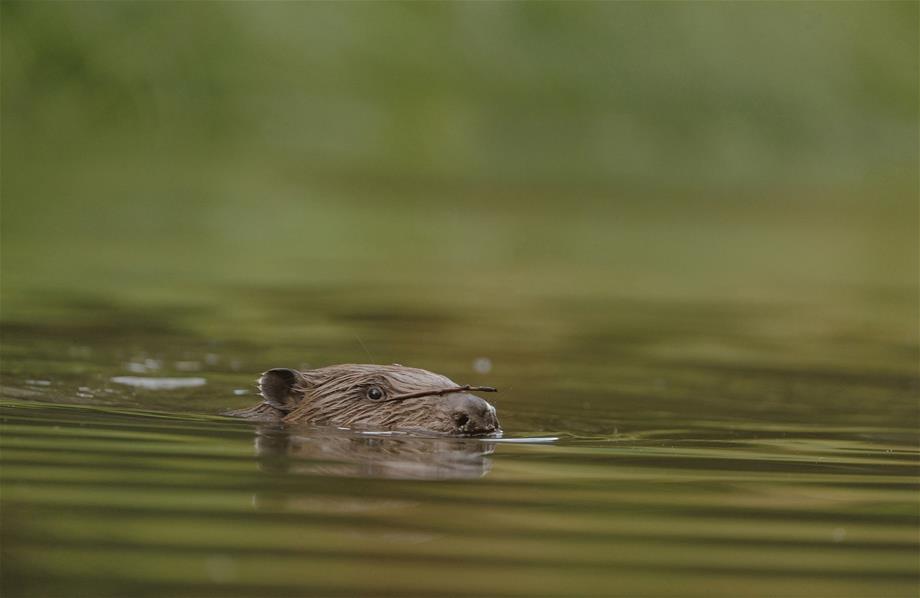

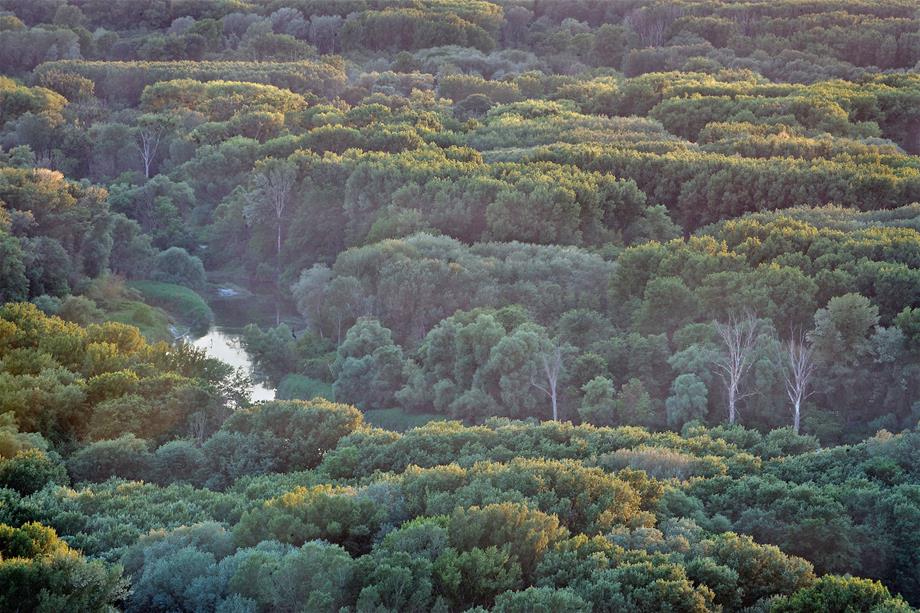
Donau-Auen National Park
• A national park covering part of the Danube in Eastern Lower Austria and Vienna
• Established in 1996
• Covering 14 local authority areas
• 9,300 ha in size
• 838 species of vascular plants, 109 species of breeding bird, 63 species of fish and 231 species of vertebrates
• 62% forest, 17% open water areas, 6% wetland meadows
Established in 1996 and more than 9,300 hectares in area, the Donau-Auen National Park is not only the "green lung” and climate regulator between Vienna and Bratislava, but is also the largest contiguous, ecologically most intact and natural wetlands landscape of its kind in Central Europe. The river and its floods mould the landscape, and through their dynamically fluctuating water levels and resulting habitats shelter a wide diversity of species, from kingfishers to sea eagles, beaver, European pond turtles and numerous insect species to black poplar and impressive species of orchids. Many rare and endangered creatures find refuge in the green wilderness along the river. The national park is also trying to relink the lateral tributaries to the Danube to promote the formation of a dynamic water system. Successful waterway integration can already be seen at several locations in the national park. The riverbank is also gradually being reconstructed to form natural shorelines with areas of gravel and shallow water zones.
The first point of contact for visitors is the schlossORTH National Park Centre, the "door to the wetlands” in the village of Orth on the Danube. Guests young and old also like the guided walks and boat trips in canoes or dinghies.
Tour of Schlossinsel and Wetlands Walk
Guided by our National Park rangers, a tour of the Schlossinsel wetlands gardens surrounding schlossORTH is a great way to experience the Danube wetlands. Get an up-close look at the European pond turtle, Emys orbicularis, or glimpse a colubrid, a native snake which excels at the art of camouflage. Enter our walk-in underwater pond - without even getting wet! Observe various Danube fish species swimming in an underwater forest of Nuphar and Mare's-tail. Watch the pearl-like bubbles produced by aquatic plants as they "breathe" underwater. Experience the diversity of the Danube wetlands plant kingdom, from the climbing vine Traveller's Joy to tasty hops and the rustling leaves of the White Poplar.
After enjoying at the Schlossinsel, continue on into the wetlands forest on a guided walk along the Faden Creek, a former side arm of the Danube. Learn more about typical wetlands habitats such as side arms, riparian forest and flood protection barriers.
According to season, this tour offers special highlights such as spring bloomers, bird calls, dry grassland vegetation, amphibians, molluscs and - of course - lots of insects! Come visit these fascinating wetlands natives in their element.
Tour Overview:
Duration: approx. 2 hours
Persons: minimum of 15 persons
Price: € 11.50 per person
Rubber Dinghy Tour and Wetlands Walk in Orth/Danube
Together with National Park rangers, take a rubber dinghy from Orth/Danube onto a Danube side arm. First you will receive basic instruction in paddling, and then you will be ready to enter the wetlands forest. See where beavers have gone before you, and learn more about the tracks of nocturnal forest inhabitants. Water conditions permitting, a gravel bank - the nucleus of the wetlands - may emerge. You may even glimpse a heron, a kingfisher, or a beaver!
The tour continues with a walk on land with National Park rangers. No matter the season, this walk is always full of surprises. The flora and fauna of the Danube floodplains are especially rich: learn about deadwood (which is in fact very alive), or the reproductive and survival strategies of plants. High-water marks in the wetlands are true eye-openers, showing just how dynamic this riverine landscape is. Native amphibians and insects may cross your path, and you might even spot rare birds and mammals.
Tour Overview:
Meeting Point: Orth/Danube, Uferhaus restaurant parking lot
Duration: approx. 3 hours
Persons: minimum of 15 persons
Price: € 24 per person
Canoe Tour in Stopfenreuth
Explore a former branch of the Danube in Stopfenreuth in a canoe with National Park rangers. After learning the basics of paddling, you will set out across calm waters, going as far as the mouth of the branch at the Danube.
Stopfenreuth is known as the birthplace of what came to be the National Park. It was here, in December 1984, where protesters were able to put a stop to plans for a Danube power plant at Hainburg by occupying the wetlands.
When water levels are as they should be, the waters are very clear. Fish can be seen swimming among the lush aquatic plants and floating lilies. Depending on the season, highlights of this tour may include sightings of European pond turtles, beavers, kingfishers, wild boars or deer.
Once the opposite Danube bank has been reached, the group disembarks and enjoys the marvellous view to the city of Hainburg. In the summer, take a dip in the river or look for shells, beaver tracks or pretty Danube pebbles. Then it's back in the canoes for the return trip on the same route back to Stopfenreuth.
Tour Overview:
Meeting Point: Stopfenreuth, Forsthaus restaurant at the Hochwasserschutzdamm (flood protection barrier)
Duration: approx. 3 hours
Persons: minimum of 9/max. 27 persons
Price: € 230 per canoe (minimum of 6, max. 9 persons)
Bookings, Information and Assistance:
schlossORTH National Park Centre
Schloss Orth, 2304 Orth/Danube
21 March to 30 September: daily from 9:00 a.m. - 6:00 p.m.
1 October to 1 November: daily from 9:00 a.m. - 5:00 p.m.
2 November to 20 March: closed for winter
For telephone inquiries during winter season: Mon-Fri from 9:00 - 1:00 p.m.
Tel. +43(0)2212/3555, schlossorth@donauauen.at
Travel Information
Public transportation
When using public transportation to get to the Donau-Auen National Park from the Danube's north banks, or from the schlossORTH National Park Centre, use the ÖBB Post Bus Route 391. Departs from U2/Aspernstrasse, Wonkaplatz Süd in the direction of Hainburg. Stops in Gross-Enzersdorf, Schönau, Orth/Donau, Eckartsau, and Stopfenreuth.
From the Danube's south banks, use express train line S7 departing from Vienna (e.g. from Wien Floridsdorf, Praterstern or Wien Mitte), travelling in the direction of Wolfsthal. Stops include Maria Ellend, Haslau, Regelsbrunn, Petronell, and Hainburg.
The Viennese section of the Donau-Auen National Park may be reached by local busses, the Wiener Linien. To get to the wien-lobAU National Park House take bus Route 92B from U2/Donaustadtbrücke or Route 93A from U1/Kagran.
Public transportation information by phone:
Wiener Linien (bus): +43 1/7909-100
VOR: +43 0810 222324
ÖBB Post Bus: +43 0810 222 333
ÖBB: +43 051717
By car
To get to the Lobau
Take the Lobau exit from the A22/A23 Autobahn. Continue along the Raffineriestrasse until reaching the entrance to Ölhafen; or take the Stadlau exit from the A23 and continue on to the entrance to Saltenstrasse.
To get to the wien-lobAU National Park House take the Lobau exit from the A22/A23 and continue on the Raffineriestrasse until you reach the Biberhaufenweg.
North banks of the Danube
Take the B3 highway to one of the National Park entrances Mühlleiten, Schönau, Orth/Donau, Eckartsau, or Stopfenreuth. From the north, take the B49 along the March (Morava) River after Stopfenreuth.
Take the B3 to Orth/Donau to get to the schlossORTH National Park Centre.
South banks of the Danube
Exit the A4 Autobahn at Fischamend and continue on the B9 to one of the National Park entrances on the south banks: Maria Ellend, Haslau, Regelsbrunn, Bad Deutsch-Altenburg, or Hainburg. From Bratislava, take the B9 to any of the above entrances.
Bridges crossing the Danube
Vienna: Praterbrücke A22, Reichsbrücke
Lower Austria: Hainburger Donaubrücke
Contact
schlossORTH National Park Centre
Schloss Orth, 2304 Orth/Danube
Tel. +43(0)2212/3555, schlossorth@donauauen.at
http://www.donauauen.at/?language=english
